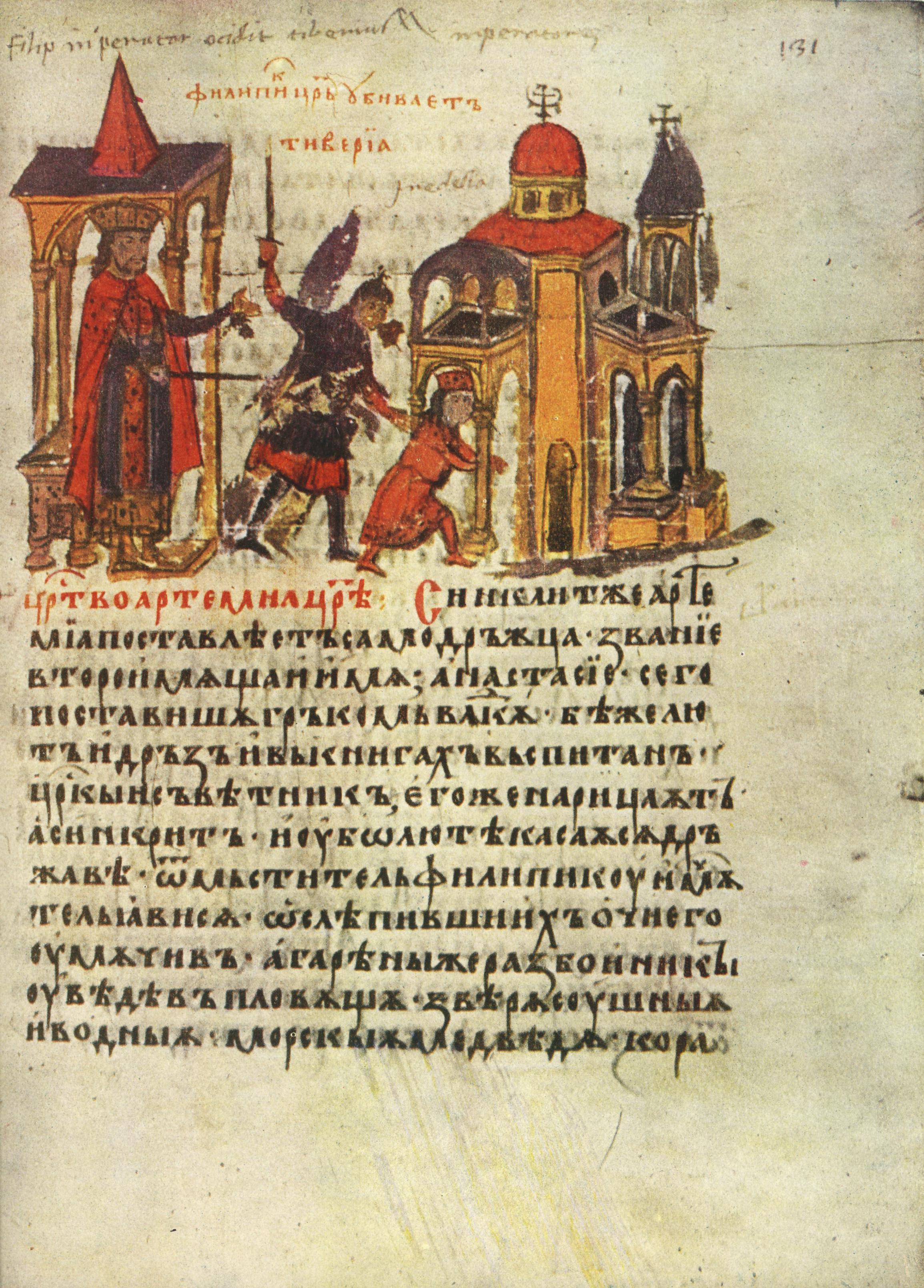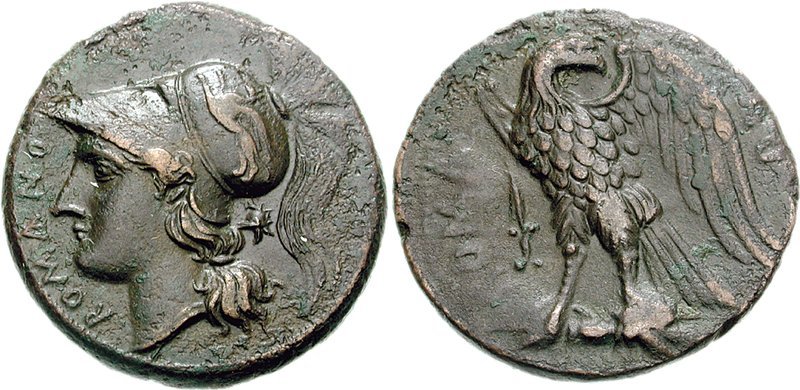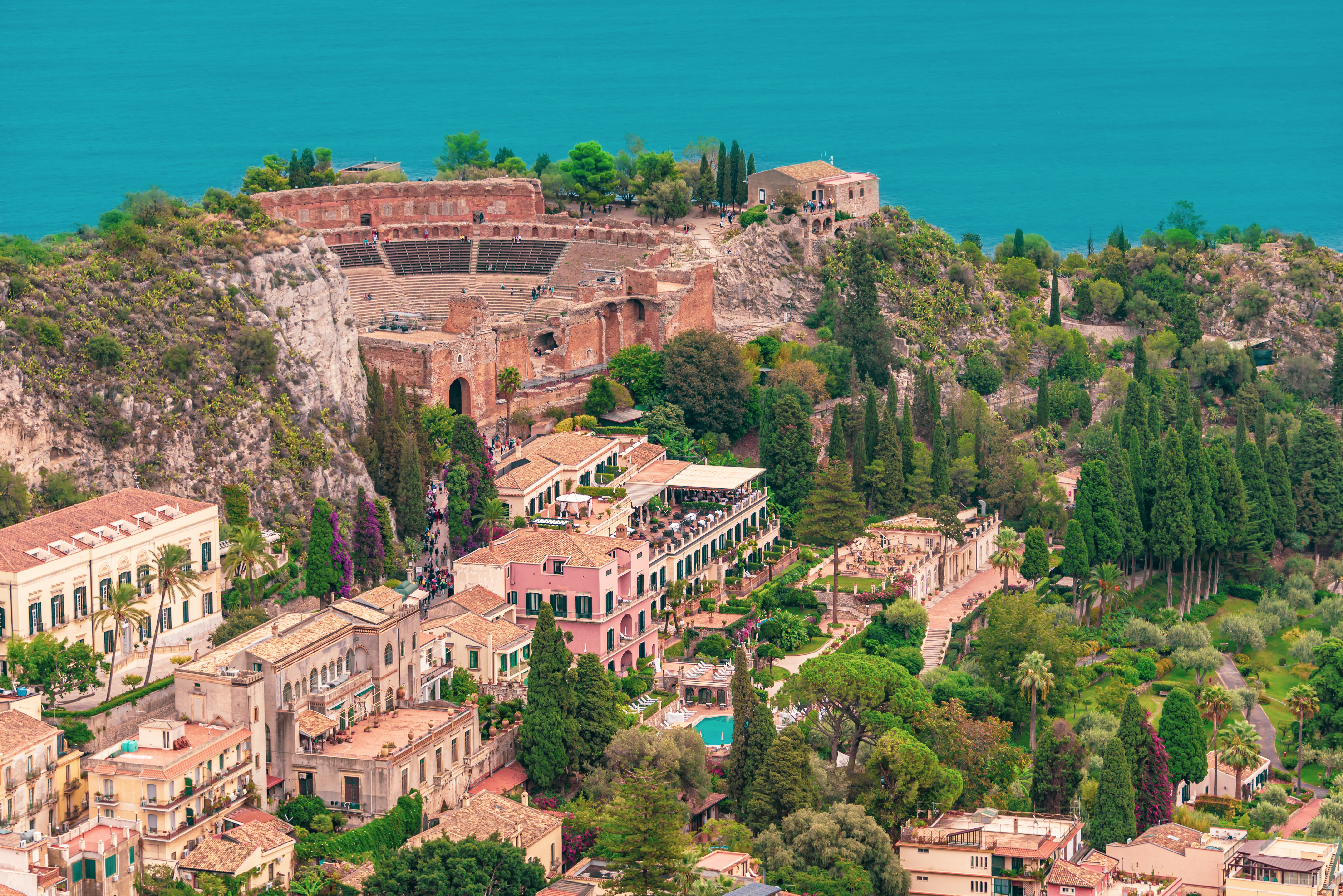|
Sicily (theme)
Sicily (, ''Thema Sikelias'') was a Byzantine province (theme) existing from the late 7th to the 10th century, encompassing the islands of Sicily and Malta, and the region of Calabria in the Italian mainland. Following the Muslim conquest of Sicily, from 902 the theme was limited to Calabria, but retained its original name until the middle of the 10th century. History Ever since its reconquest from the Ostrogoths by Belisarius in 535–536, Sicily had formed a distinct province under a ''praetor'', while the army was placed under a '' dux''. A ''strategos'' (military governor) is attested on the island in Arab sources between 687 and 695, and it is at that time that the island was probably made into a theme. The theme was based in Syracuse, traditionally the chief city of Sicily. It comprised not only the island, which was divided into districts called '' tourmai'', but also the mainland duchy of Calabria (Greek: , ''doukaton Kalavrias''), which extended roughly up to the river ... [...More Info...] [...Related Items...] OR: [Wikipedia] [Google] [Baidu] |
Theme (country Subdivision)
The themes or (, , singular: , ) were the main military and Subdivisions of the Byzantine Empire, administrative divisions of the middle Byzantine Empire. They were established in the mid-7th century in the aftermath of the Slavic migrations to Southeastern Europe and Early Muslim conquests, Muslim conquests of parts of Byzantine territory, and replaced the earlier Roman province#Late imperial period, provincial system established by Diocletian and Constantine the Great. In their origin, the first themes were created from the areas of encampment of the field armies of the East Roman army, and their names corresponded to the military units that had existed in those areas. The theme system reached its apogee in the 9th and 10th centuries, as older themes were split up and the conquest of territory resulted in the creation of new ones. The original theme system underwent significant changes in the 11th and 12th centuries, but the term remained in use as a provincial and financial c ... [...More Info...] [...Related Items...] OR: [Wikipedia] [Google] [Baidu] |
Praetor
''Praetor'' ( , ), also ''pretor'', was the title granted by the government of ancient Rome to a man acting in one of two official capacities: (i) the commander of an army, and (ii) as an elected ''magistratus'' (magistrate), assigned to discharge various duties. The functions of the magistracy, the ''praetura'' (praetorship), are described by the adjective itself: the ''praetoria potestas'' (praetorian power), the ''praetorium imperium'' (praetorian authority), and the ''praetorium ius'' (praetorian law), the legal precedents established by the ''praetores'' (praetors). ''Praetorium'', as a substantive, denoted the location from which the praetor exercised his authority, either the headquarters of his ''castra'', the courthouse (tribunal) of his judiciary, or the city hall of his provincial governorship. The minimum age for holding the praetorship was 39 during the Roman Republic, but it was later changed to 30 in the early Empire. History of the title The status of the ''pra ... [...More Info...] [...Related Items...] OR: [Wikipedia] [Google] [Baidu] |
Justinian II
Justinian II (; ; 668/69 – 4 November 711), nicknamed "the Slit-Nosed" (), was the last Byzantine emperor of the Heraclian dynasty, reigning from 685 to 695 and again from 705 to 711. Like his namesake, Justinian I, Justinian II was an ambitious and passionate ruler who was keen to restore the Roman Empire to its former glories. However, he responded brutally to any opposition to his will and lacked the finesse of his father, Constantine IV. Consequently, he generated enormous opposition to his reign, resulting in his deposition in 695 in a popular uprising. He only returned to the throne in 705 with the help of a Bulgar and Slav army. His second reign was even more despotic than the first, and in 711 he was killed by mutinous soldiers. First reign Justinian II was the eldest son of Emperor Constantine IV and Anastasia. His father appointed him as his heir sometime after October 682, upon the deposition of his uncles Heraclius and Tiberius. In 685, at the age of sixteen, J ... [...More Info...] [...Related Items...] OR: [Wikipedia] [Google] [Baidu] |
Siege Of Rometta
The siege of Rometta was a successful siege of the Byzantine city of Rometta, in northeastern Sicily, by the Kalbids on behalf of the Fatimid Dynasty, that took place between 963 and 965 and marked the conclusion of the Muslim conquest of Sicily. Siege The siege was led by the two Kalbid cousins al-Hasan ibn Ammar and Ahmad ibn al-Hasan al-Kalbi. In 962, Taormina was besieged and reduced by Ahmad, where the entire population was sold into slavery and the area was colonized by Muslim resettlers. Following the fall of Taormina in 962, the Kalbids moved north to Rometta. The next year Ahmad began the siege. The city soon sent an envoy to the Byzantine emperor, Nikephoros II Phokas, requesting military aid and provisions. Nikephoros responded by equipping a fleet of around 40,000 men, many of whom were veterans from the Byzantine conquest of Crete, for battle in Sicily. The fleet was commanded by Niketas Abalantes, while the cavalry was commanded by Manuel Phokas, a nephew ... [...More Info...] [...Related Items...] OR: [Wikipedia] [Google] [Baidu] |
Rometta
Rometta (Sicilian language, Sicilian: ''Ramietta'') is a ''comune'' (municipality) in the Metropolitan City of Messina in the Italy, Italian region Sicily, located about east of Palermo and about west of Messina. It was the last bastion of Sicily controlled by the Eastern Roman Empire (Byzantium), and falling only in 965 to the Kalbids, Kalbids' Muslim army in the Siege of Rometta. Rometta borders the following municipalities: Messina, Monforte San Giorgio, Roccavaldina, Saponara, Venetico, Spadafora. References External links Official websiteRometta - Website dedicated to the city Rometta, {{Sicily-geo-stub ... [...More Info...] [...Related Items...] OR: [Wikipedia] [Google] [Baidu] |
Messina
Messina ( , ; ; ; ) is a harbour city and the capital city, capital of the Italian Metropolitan City of Messina. It is the third largest city on the island of Sicily, and the 13th largest city in Italy, with a population of 216,918 inhabitants in the city proper and about 595,948 in the metropolitan city as of 2025. It is located near the northeast corner of Sicily, at the Strait of Messina and it is an important access terminal to Calabria region, Villa San Giovanni, Reggio Calabria on the mainland. Founded by the Sicels with the name of ''Zancle'' in 757 BC, which in Siculian, their language meant sickle, it was repopulated by Greek colonisation, Greek colonists of Magna Graecia and renamed ''Messana''. The city was renamed ''Messina'' in the Byzantine Empire, Byzantine age. It was an important Roman Empire, Roman, and then Byzantine Empire, Greek-Byzantine city, but in 843 it was completely destroyed by the Arabs. Almost abandoned during the Islamic period, it rose again i ... [...More Info...] [...Related Items...] OR: [Wikipedia] [Google] [Baidu] |
Taormina
Taormina ( , , also , ; ) is a ''comune'' (municipality) in the Metropolitan City of Messina, on the east coast of the island of Sicily, Italy. Taormina has been a tourist destination since the 19th century. Its beaches on the Ionian Sea, including that of Isola Bella, are accessible via an aerial tramway built in 1992, and via highways from Messina in the north and Catania in the south. On 26–27 May 2017 Taormina hosted the 43rd G7 summit. History The history of Taormina dates back to before Ancient Greece established its first colony on Sicily in 734 BCE in Magna Graecia. After the fall of the Western Roman Empire, Taormina continued to rank as one of the more important towns of the island. Taormina followed the history of Sicily in being ruled by successive foreign monarchs. After the Italian unification, Taormina began to attract well-off tourists from northern Europe, and it became known as a welcoming haven for gay men and artists. Main sights The present town ... [...More Info...] [...Related Items...] OR: [Wikipedia] [Google] [Baidu] |
Siege Of Syracuse (877–878)
The siege of Syracuse from 877 to 878 led to the fall of the city of Syracuse, the Byzantine capital of Sicily, to the Aghlabids. The siege lasted from August 877 to 21 May 878 when the city, effectively left without assistance by the central Byzantine government, was taken by the Aghlabid forces. Following their first landing in Sicily in the late 820s, the Aghlabids had tried several times, without success, to capture Syracuse. They were able to gradually take over the western half of the island, however, and, in 875, a new and energetic governor, Ja'far ibn Muhammad, was appointed, determined to capture the city. Ja'far began the siege in August 877 but soon left it in charge of his son Abu Ishaq, while he retired to Palermo. The Arabs were well-supplied with siege weapons, while the inhabitants of Syracuse were left largely unsupported by the Byzantine fleet, which was busy with transporting marble for a new church in Constantinople and was then delayed by adverse weat ... [...More Info...] [...Related Items...] OR: [Wikipedia] [Google] [Baidu] |
Duchy Of Amalfi
The Duchy of Amalfi () or the Republic of Amalfi was a '' de facto'' independent state centered on the Southern Italian city of Amalfi during the 10th and 11th centuries. The city and its territory were originally part of the larger Duchy of Naples, governed by a patrician, but it extracted itself from Byzantine vassalage and first elected a duke (or doge) in 958. During the 10th and 11th centuries Amalfi was estimated to have a population of 50,000–70,000 people. It rose to become an economic powerhouse, a commercial center whose merchants dominated Mediterranean and Italian trade in the ninth and tenth centuries, before being surpassed and superseded by the other maritime republics of the North and the Centre: Pisa, Venice, Genoa, Ancona and Gaeta. In 1073, Amalfi lost its independence, falling to Norman invasion and subsequently to Pisa in 1137. History The city of Amalfi was founded as a trading post in 339. Its first bishop was appointed in 596. In 838, the city wa ... [...More Info...] [...Related Items...] OR: [Wikipedia] [Google] [Baidu] |
Duchy Of Gaeta
The Duchy of Gaeta () was an Early Middle Ages, early medieval state centered on the coastal Mezzogiorno, South Italian city of Gaeta. It began in the early ninth century as the local community began to grow autonomous as Byzantine Empire, Byzantine power lagged in the Mediterranean and the peninsula due to Lombards, Lombard and Saracens, Saracen incursions. The primary source for the history of Gaeta during its ducal period is the ''Codex Caietanus'', a collection of charters preserving Gaetan history better and in greater detail than that of its neighbouring coastal states: Naples, Amalfi, and Sorrento. In 778, it was the headquarters from which the patrikios, patrician of Sicily directed the campaign against the Saracen invaders of Campania. Rise of the Docibilans The first consul of Gaeta, Constantine of Gaeta, Constantine, who associated his son Marinus I of Gaeta, Marinus with him, was a Byzantine agent and a vassal of Andrew II of Naples. Constantine defended the city fro ... [...More Info...] [...Related Items...] OR: [Wikipedia] [Google] [Baidu] |
Duchy Of Naples
The Duchy of Naples (, ) began as a Byzantine province that was constituted in the seventh century, in the lands roughly corresponding to the current province of Naples that the Lombards had not conquered during their invasion of Italy in the sixth century. It was governed by a military commander ('' dux''), and rapidly became a ''de facto'' independent state, lasting more than five centuries during the Early and High Middle Ages. Naples remains a significant metropolitan city in present-day Italy. Territory In the 7th century the Duchy included, in addition to Naples, the areas that the Lombards had failed to conquer. It extended into the area of the current metropolitan City of Naples, including, the Vesuvius zone, the Sorrento Peninsula and the island of Capri, the Phlegraean area and the islands of Ischia and Procida, the Afragola, the territories of Pomigliano d'Arco, Caivano, Sant'Antimo, Giugliano, the Nola area, as well as areas of the current province ... [...More Info...] [...Related Items...] OR: [Wikipedia] [Google] [Baidu] |
Crati
The Crati is a river in Calabria, southern Italy. It is the largest river of Calabria and the third largest river of southern Italy after the Volturno and the Sele. In classical antiquity it was known as the Crathis or Crater (Greek: ). Geography The Crati rises in the central Sila Mountains in the ''comune'' Aprigliano. It starts at as the ''Craticello'' at an elevation of 1,742 meters. It descends very steeply northward towards Cosenza where it is joined on the left by the Busento river, doubling in size. From here on it flows through a large plain, the Vallo del Crati. Here it is joined by several tributaries from the right: the Arente, Mucone (its main tributary on the right) and Duglia rivers. Several smaller streams also join it on the right: the Finita, Turbolo, Cucchiato, Campagnano, Mavigliano and Settimo. The river is also joined by several left tributaries including the Annea. It has a drainage basin of . With a discharge of 20 m/s it continues to Tarsia ... [...More Info...] [...Related Items...] OR: [Wikipedia] [Google] [Baidu] |






